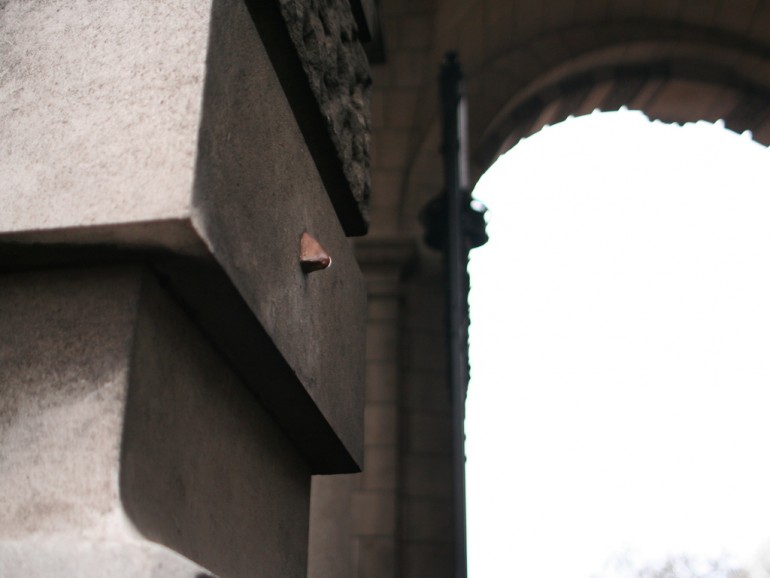Sponsored Listings:
London is a city that reveals itself slowly. Behind an unassuming door you find an incredible restaurant, or you hear about a basement where the music is amazing on Saturdays. Or, perhaps, the completely ordinary looking, rather unassuming person across from you at dinner turns out to be a famous judge. It makes sense, then, that the city is full of strange little secret sights, collected over hundreds of years of history. Here is an hour’s walk through Trafalgar Square, Covent Garden and Soho highlighting some of the best…you can also Follow the map here.
by: paulcox72 flickr – Courtesy: Trip.com
Artist Rick Buckley responded to the introduction of CCTV cameras in London by making seven casts of his own nose (get it?) Legend has it you will find great wealth if you find all seven. Just be careful – I found at least one imposter nose later on the walk!
4th plinth Trafalgar Square

by: Nupur Singh – Courtesy: Trip.com
The Fourth Plinth at the northeast corner of the square was built in 1841 and was meant to hold a statue of William IV but, due to insufficient funds, remained empty. Over 150 years later, the Fourth Plinth now hosts a series of commissioned artworks by world class artists and is the most talked about contemporary art prize in the UK. The previous statue was the giant rooster pictured, currently, there is a giant blue ‘thumbs up’ called ‘Really Good’ by artist David Shrigley.
St Martin in the Fields wonky Stained Glass window

by: bastique flickr – Courtesy: Trip.com
This installation was created by Iranian artist Shirazeh Houshiary, to replace a bombed out window from WW2. It’s meant to show a Contrast of disintegration and stabilization and in shape reminiscent of a cross. Enter the church and look up – you can’t miss it.
Brydges Place
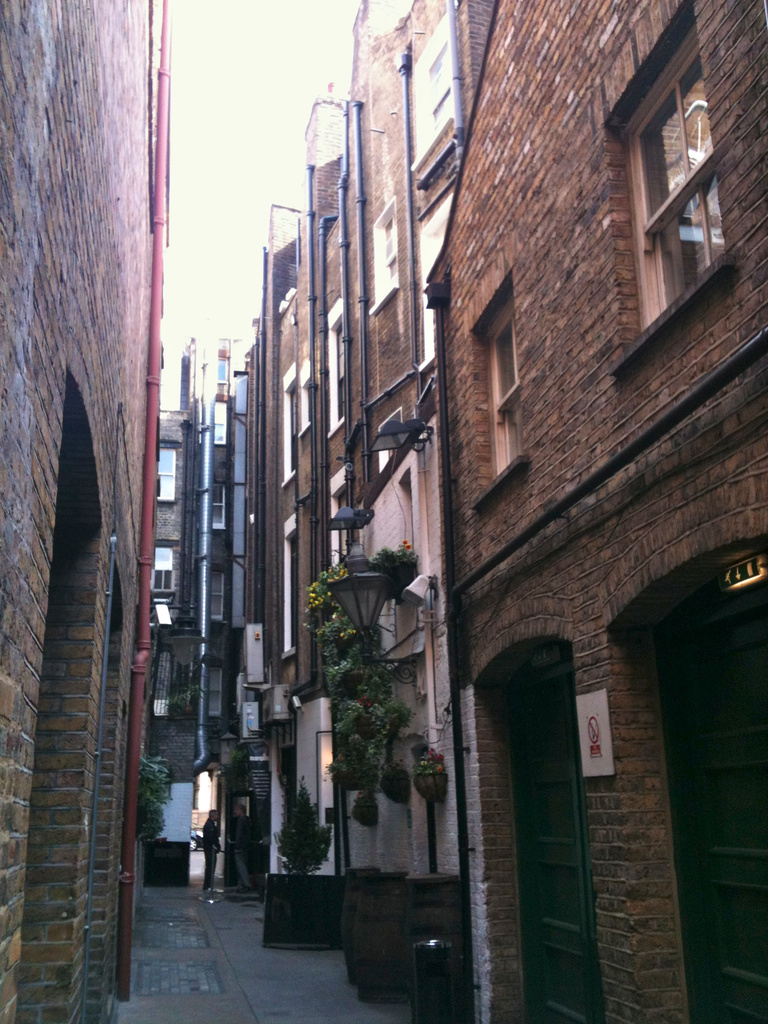
by: avail flickr – Courtesy: Trip.com
This is the narrowest alley in London. Just 15 inches wide at its narrowest point, the alley runs for 200 yards and connects St Martin’s Lane with Bedfordbury in Covent Garden. Only one person can walk down it at a time…and if you’re feeling thirsty stop in at the Marquis of Granby pub – a former haunt of Dickens which backs onto the alley, and is a favorite for performers post-Coliseum show.
St Paul’s Church Covent Garden – the actor’s church

by: stevecadman flickr – Courtesy: Trip.com
The Churchyard makes a great secret garden and the church is also a theatre. But step inside and head up to the right side of the altar to find the gruesome Macklin memorial. Charles Macklin, who pioneered more realistic acting style in the 19th century, also stabbed a fellow performer in the eye at Theatre Royal Drury Lane. His memorial features a poem to his accomplishments and a theatre mask with a knife through its eye, in silent commemoration. Plus, check out the graves of Charlie Chaplin, Anton Dolin, and other British performing luminaries.
Floral Street Ears
Artist Tim Fishkin, responding to the noses, cast his own ears and popped them onto Floral Street buildings. If you’re facing away from Covent Garden, the first one comes up quickly on the left, and the second a bit farther down on your right.
Seven Dials
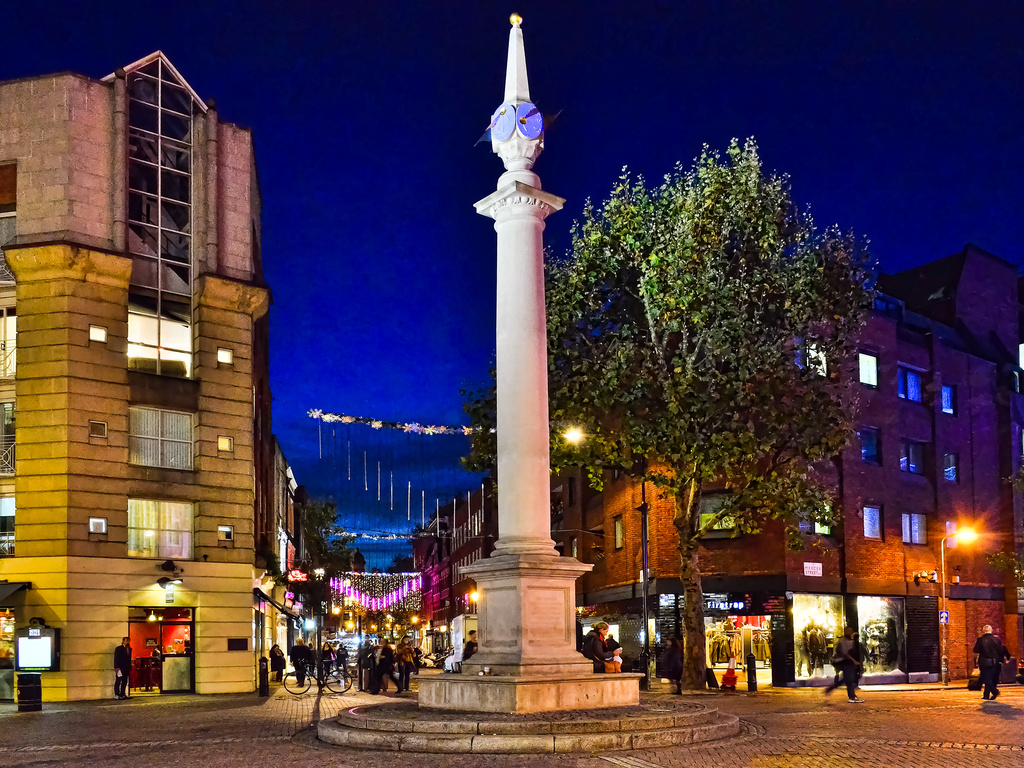
by: garryknight flickr – Courtesy: Trip.com
In the 1690s Thomas Neale commissioned England’s leading stonemason, Edward Pierce, to design and construct the Sundial Pillar in 1693-4 as the centerpiece of his development in Seven Dials. The Pillar was topped by six sundial faces, the seventh ‘style’ being the column itself. It was regarded as one of London’s ‘great public ornaments’ and the layout and identity of the area revolves around it. Created as a posh area, it became extremely down-market for a while and is now super-posh again.
Lost Little Compton Street
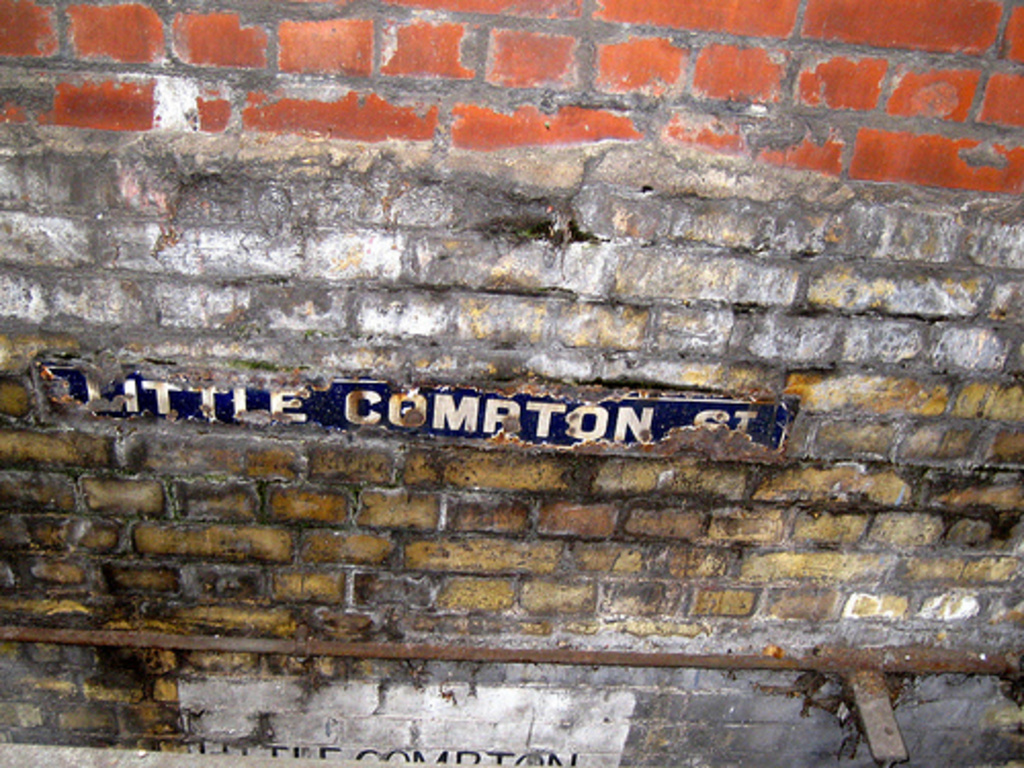
by: Julia P – Courtesy: Trip.com
Located at the traffic island at the intersection of Charing Cross Road and Old Compton Street in Soho, if you look through the grate (facing away from Old Compton Street) you can see two street signs for Little Compton Street. Maps from the 1790s show Little Compton Street connecting Old and New Compton Streets, in between Greek and Crown streets. The Street level then was around basement level now!
From there you can walk up Dean Street, and collect two more of the seven noses.
Meard St Nose + Quo Vadis Nose
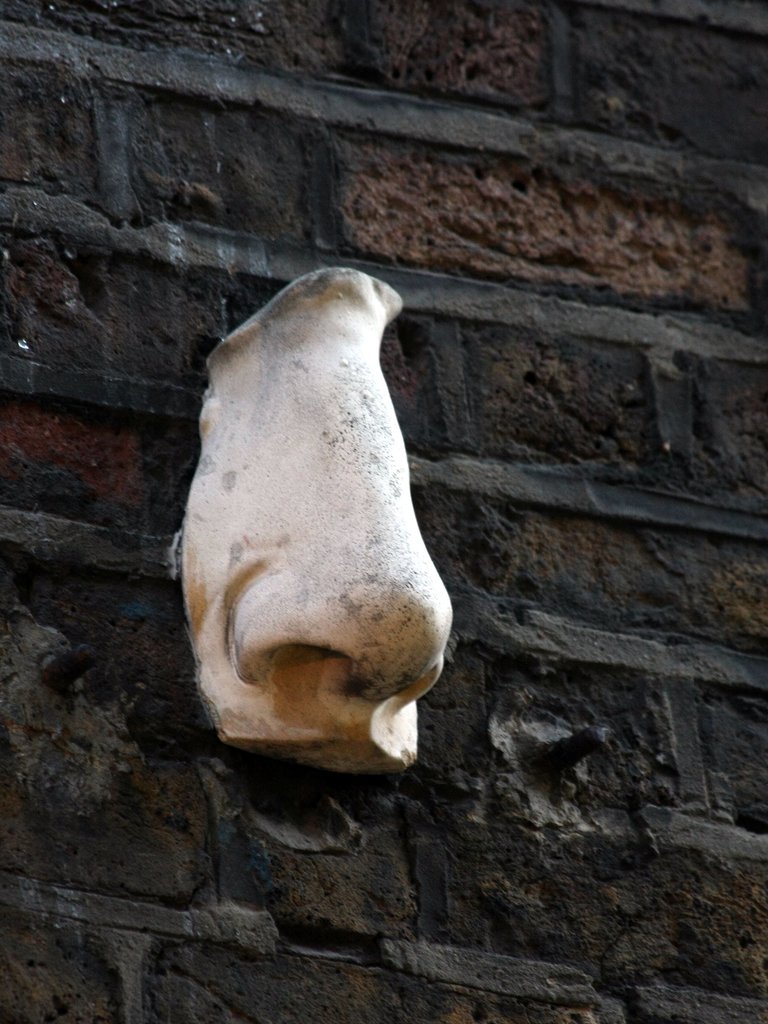
by: garryknight flickr – Courtesy: Trip.com
This big nose is easy to spot on the building exterior where Meard Street meets Dean.
The Quo Vadis nose is trickier. It’s NOT The big purple nose on a strip club, but the little green nose behind a plant ON the Quo Vadis restaurant. Lots of people get fooled by this one!
St Anne’s Court
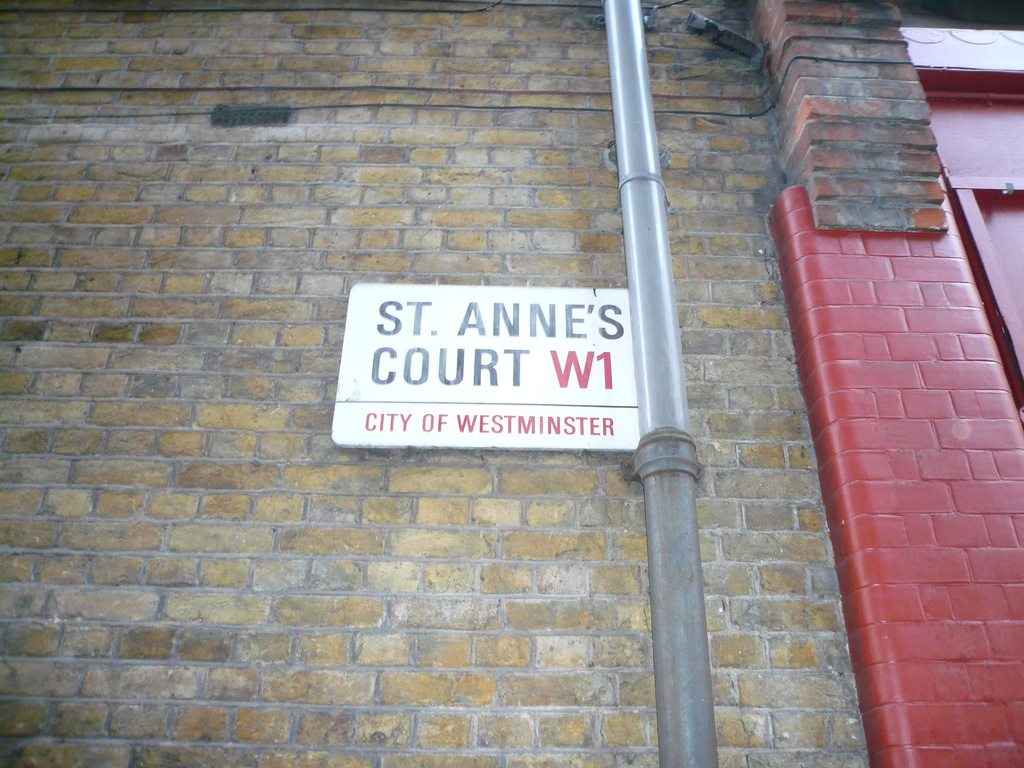
by: Jeherv flickr – Courtesy: Trip.com
This little street features some awesome street art and David Bowie history.
Invader is a French artist who defines himself as a ‘UFA’, an ‘Unidentified Free Artist’. Since 1998 he has developed a large scale project with the code name: Space Invaders. It’s about liberating Art from its usual alienators in the form of institutions such as galleries and museums. It is also about freeing the Space Invaders from their video game TV screens and to bring them into our physical world.
Right across from the Invader is the site of Trident Studios.
This studio did a lot to bring David Bowie into his own, with ’Space Oddity’, ‘Hunky Dory’ and the ‘Rise and Fall of Ziggy Stardust’ all recorded here.
Head up to the John Snow pub on Broadwick Street and check out the blue plaque.

by: Ewan-M flickr – Courtesy: Trip.com
This was the site Of John Snow’s cholera pump, which was taken out for construction but will be back (we hope). John Snow once traced London’s cholera outbreak to the pump, broke the handle off to stop people drinking – and now, we know cholera is a waterborne disease.
Selene Sculpture at Nadler Hotel

by: Julia P – Courtesy: Trip.com
The Nadler hotel is not only a cool boutique hotel (bookable on Trip.com) they have commissioned some awesome contemporary art. “I wanted to make a classical statue with a contemporary twist, and was keen to create a statue of a black woman, rare in London” says artist Hew Locke. The statue is informed by Art Nouveau, Victorian fairy paintings (especially those of Atkinson Grimshaw), and by the sight of a group of tall, glamorous drag queens parading down the road in Soho at three o’clock one afternoon.
Tudor Hut at Soho Square
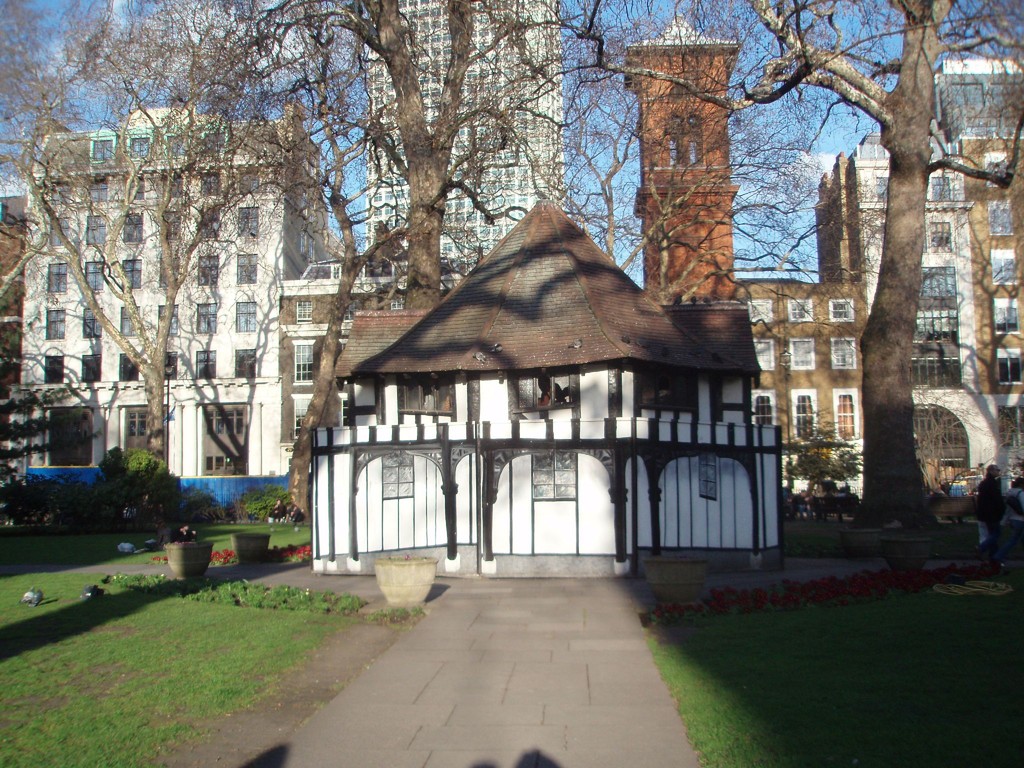
by: urbanlegend flickr – Courtesy: Trip.com
Most Londoners know Soho Square. But the purpose and history of the Tudor hut sitting in the middle are less well-known. First, despite the fact that it is crooked just like the real thing, the building is not Tudor. It’s from 1925 and was designed as an electricity substation for the Charing Cross Electricity Company. Then, during WWII, this Tudor hut replica was a brick lined, concrete ceilinged bomb shelter that could fit 150-200 people, with just one toilet for all!
Now…the best way to get the image of a crowded, stinky bomb shelter out of your mind? Pop across the square for a gin and tonic at Six Storeys on Soho, a new bar you’d just walk right past if you didn’t know if were there.
Trip.com’s mission is to make finding awesome secret spots less work and more fun. Book an under-the-radar London hotel here.
Source: gogobot.com

